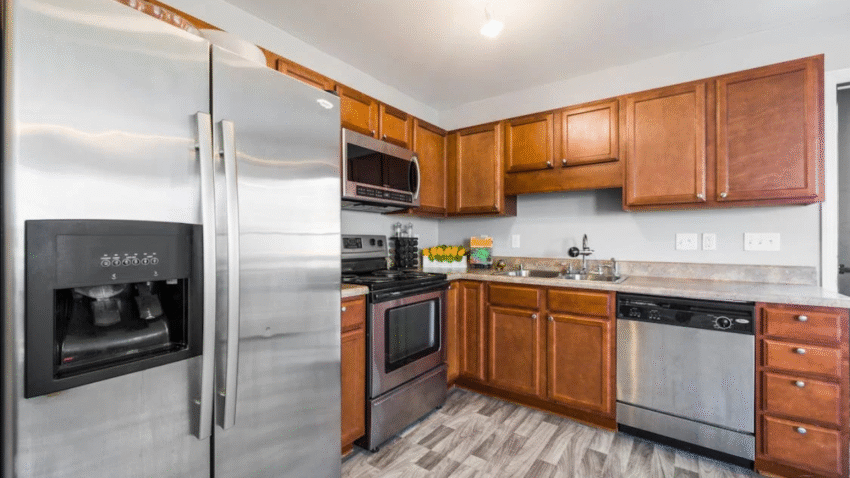Introduction
Tired of sprouted garlic or mushy onions? Proper storage makes all the difference. In this guide, you’ll learn how to store onions and garlic the right way to maximize their shelf life, flavor, and freshness. Whether you cook daily or stock up in bulk, this step-by-step kitchen guide will help you avoid waste and keep your pantry organized and efficient.
Why Storing Onions and Garlic Properly Matters in the Kitchen
Onions and garlic are essential ingredients in countless recipes, from soups and stews to stir-fries and sauces. But storing them the wrong way can lead to mold, sprouting, or rotting—wasting both money and flavor.
Proper storage:
- Extends shelf life and prevents spoilage
- Preserves flavor and texture
- Reduces food waste and pantry odors
- Ensures your ingredients are ready when you need them
Because both onions and garlic are sensitive to moisture, light, and temperature, keeping them in the right environment is key to kitchen success.
Step-by-Step Guide to Storing Onions and Garlic
1. Choose Fresh, Firm Bulbs
Before you store anything, start with high-quality produce:
- Onions should be firm with dry, papery skin and no soft spots.
- Garlic should feel heavy and tight, with intact skin and no visible sprouts.
Kitchen Tip: Avoid buying pre-peeled garlic or pre-chopped onions unless you plan to use them immediately—they spoil quickly and lose flavor.
2. Store in a Cool, Dry, and Dark Place
The ideal storage temperature is between 10–15°C (50–60°F). Avoid areas that are too warm or humid, like next to your oven or under the sink.
Best storage options:
- A pantry or cupboard away from heat
- A mesh basket or breathable bin
- A paper bag or open bowl (never plastic!)
Reminder: Proper airflow is crucial. Trapped moisture = mold and rot.
3. Keep Onions and Garlic Separate from Potatoes
Storing onions and garlic near potatoes is a common mistake. Potatoes release moisture and gases that accelerate spoilage in onions and garlic.
Solution: Store them in separate bins or cabinets, at least a few feet apart.
4. Avoid Refrigeration (for Whole Bulbs)
Don’t refrigerate whole, unpeeled onions or garlic. The cold temperature turns starches into sugars, making them soft and prone to sprouting.
Exceptions:
- Once peeled or chopped, they should be refrigerated in airtight containers.
- In very hot or humid climates, refrigeration may help prevent mold, but check them often for spoilage.
Pro Tip: Store chopped onions for up to 7 days and minced garlic for up to 3 days in the fridge.
5. Use Mesh Bags or Baskets
Breathable storage containers like mesh bags, wire baskets, or wooden crates are best for airflow. Avoid plastic bags or closed containers, which trap moisture.
Optional DIY: You can create your own storage hanger using old pantyhose. Drop in a bulb, tie a knot, repeat, and hang it in a dark, dry place.
6. Watch for Signs of Spoilage
Check your onions and garlic regularly. Toss any that show:
- Mold
- Sliminess
- Strong sour smell
- Soft or mushy spots
- Sprouting (it’s still edible, but less flavorful)
Kitchen Hack: If garlic sprouts, you can still use it—just cut it in half and remove the green germ for a milder flavor.
7. Store Peeled or Chopped Pieces Properly
Once you’ve peeled or chopped your onions or garlic, follow these tips:
- Refrigerate in airtight glass or plastic containers.
- Use within a few days to retain flavor and reduce the risk of bacterial growth.
- Avoid aluminum foil—it reacts with sulfur compounds and alters the taste.
Bonus Tip: Freeze excess chopped garlic or onions in small portions using an ice cube tray with olive oil. Great for soups, sauces, and quick cooking.
Common Mistakes to Avoid
Mistake 1: Storing in Plastic Bags
Solution: Plastic traps moisture, encouraging mold. Use mesh, paper, or cloth bags for proper airflow.
Mistake 2: Keeping Garlic in the Fridge
Solution: Refrigeration encourages sprouting and softening. Store whole garlic bulbs at room temperature in a dark place.
Mistake 3: Combining Onions with Potatoes
Solution: Keep these ingredients apart. Their gases and moisture affect each other’s shelf life negatively.
Mistake 4: Using a Closed Container
Solution: Lack of ventilation leads to trapped moisture. Always store in a breathable container or space.
Mistake 5: Ignoring Sprouting Bulbs
Solution: Remove sprouting bulbs quickly. One bad bulb can accelerate spoilage in the rest.
Extra Tips & Kitchen Hacks
Tip 1: Freeze Garlic in Oil for Convenience
Peel fresh garlic, mince it, and mix it with olive oil. Freeze it in ice cube trays and use a cube as needed for stir-fries, sauces, or roasts.
Tip 2: Roast Old Garlic Bulbs
If your garlic is about to go bad, roast it whole! Cut off the top, drizzle with oil, wrap in foil, and roast at 200°C (400°F) for 30–40 minutes. Store in the fridge and spread like butter on bread or use in mashed potatoes.
Tip 3: Hang Onions in Braids
If you buy onions in bulk or grow your own, try the traditional method of hanging them in braided bundles. It keeps them ventilated and looks charming in farmhouse-style kitchens.
Related Task: Want to know how to clean and maintain your kitchen pantry? Check out our guide: How to Organize Your Kitchen Pantry.
Conclusion
Storing onions and garlic the right way ensures you always have fresh, flavorful ingredients ready to elevate your dishes. Keep them cool, dry, and separate—avoid the fridge for whole bulbs, skip the plastic, and always allow airflow. A little care goes a long way in preserving their shelf life and your kitchen efficiency.
Now that you know how to do it properly, set up a storage spot in your pantry or cupboard and check your stock weekly. Bookmark this guide to keep your kitchen staples fresh and your recipes delicious every time.
